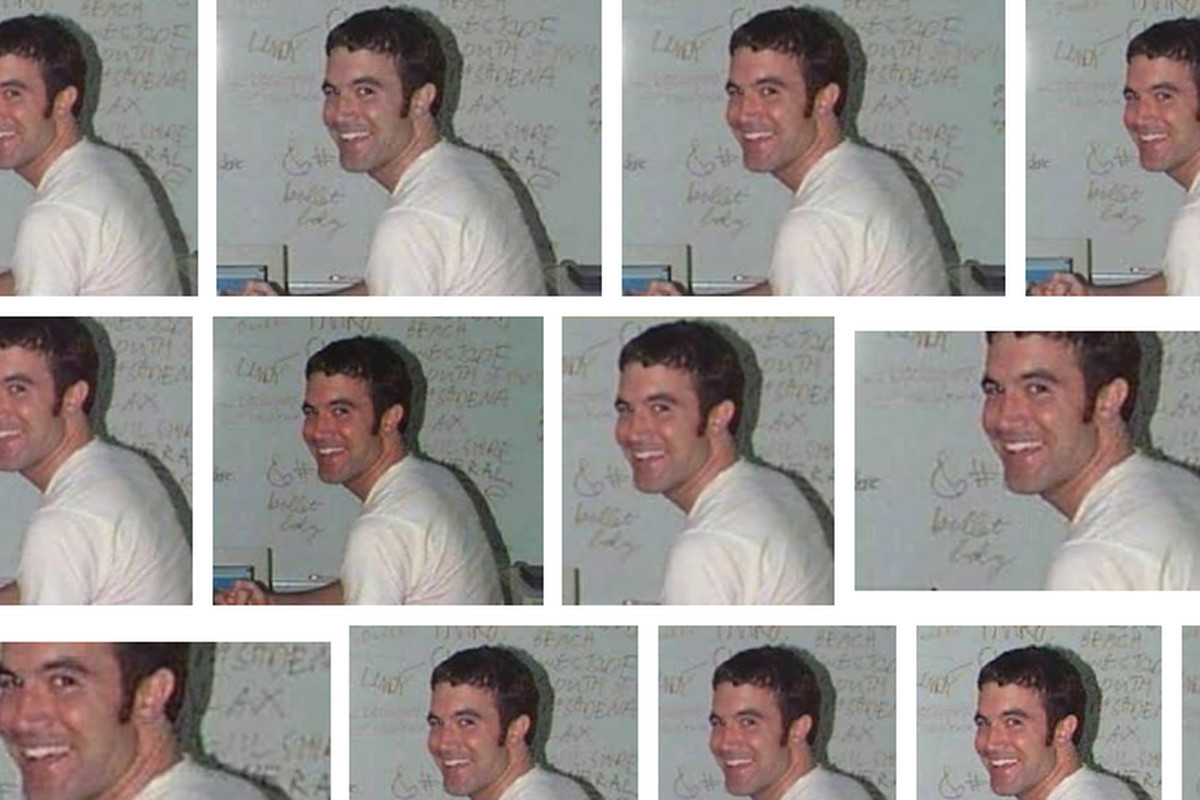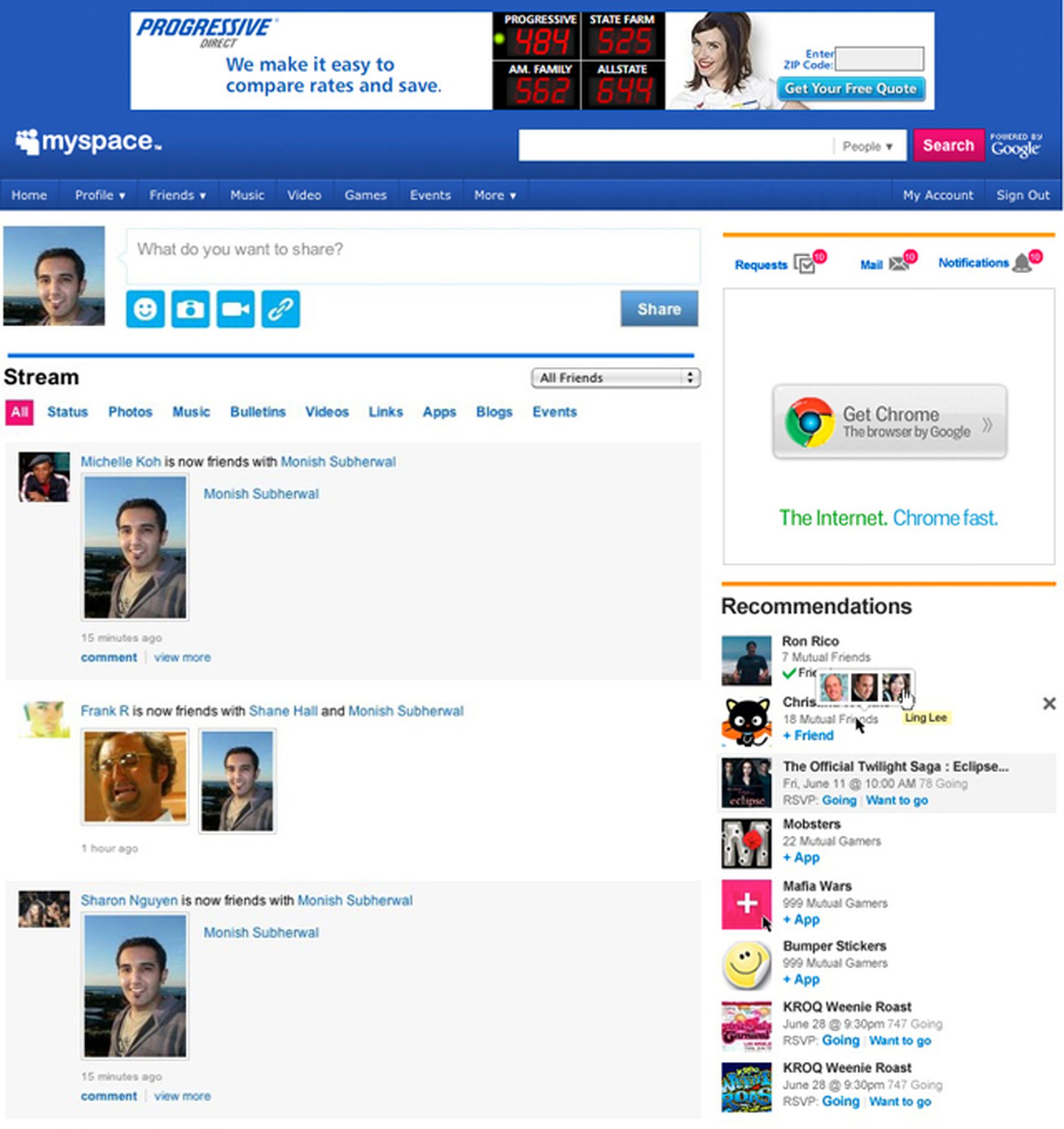
Today, the word Myspace (and it’s always just the one word) has become shorthand for a number of things: angular emo haircuts; selfies shot from vertiginously high angles; Lily Allen; that dorky dude named Tom who’s now the butt of so many memes; and ultimately, failure.
As such, it’s easy to forget that, when we first discovered it, the site was the leader in a new charge of platforms that have irrevocably changed the way we present ourselves and interact online. Where Facebook has managed to (just about) survive the capricious tides of favour when it comes to digital communities; Myspace did not. Though from 2005 to 2008, Myspace was the largest social networking site in the world and, in June 2006, overtook Google as the most visited website in the United States.

The site was founded in 2003 by a number of employees of the American internet marketing company eUniverse, who, the story goes, saw the potential of the site Friendster as a social network, and felt they could do better. Tom, that dude in the white t-shirt that we could all likely recognise in our sleep, is actually called Tom Anderson, and was Myspace’s starting president. It took off, fast, and Rupert Murdoch‘s News Corporation purchased Myspace for $580 million in July 2005.
But in just three years, the site was overtaken by Facebook, which reported more users from 2008 onwards. Despite various attempts over the years to reinvigorate the site—including bids to re-situate itself as a music platform rather than a social network (no doubt realizing the battle with Facebook would never be won); a logo and site redesign in November 2010 that boldly rebooted it in er… Helvetica, as Design Week reported; and another redesign two years later following its purchase by, bafflingly, Justin Timberlake.
“Most users had long abandoned the site, revisiting it perhaps only when drunk and nostalgic, before cringing at our former selves’ haircuts”
The final nail in its coffin (though just to be clear, the site isn’t dead—it does still exist, though was down when we tried to visit) for many was hammered earlier this year, when on 18 March 2019, it was revealed that Myspace had lost all its user-uploaded content from 2015 and earlier thanks to a botched server migration. There was no backup in place, and more than 50 million songs and twelve years’ worth of content were permanently lost. I’m sure I’m not the only one who knows a fair few people whose entire band output has been wiped out, swept into the ether of poor developer decisions, never to be heard again. But things were far from rosy prior to that—most users had long abandoned the site, revisiting it perhaps only when drunk and nostalgic, before cringing at our former selves’ haircuts and carefully curated hierarchy of “top” friends.

Like many users, my first encounter with the site was in a roundabout way through music; the year before starting university, when working the odd shift stuffing envelopes and doing other meaningless bollocks at some “music promotions” company somewhere (I think) in Camden, north London. A fellow drone was in raptures about Myspace, and kindly soon signed me up. This must have been in 2005—when my London houseshare was internet-free (I’m pretty sure we didn’t have laptops at the time anyway), and the site genuinely felt like a brilliant new tool for listening to music, interacting with other people, and yes, showing off haircuts.
“By relying on an online community of listeners, fans and digital groupies of a sort; anyone could become a star, it seemed”
While I was firmly in the indie disco camp, where the site seemed to excel was in fostering subcultures of the kind we don’t really see today. It’s often been posited that emo was the last “true” subculture; but Myspace also felt like a user-centric champion of all those indie bands of the mid-00s who had “The” at the front of their name, and thrust ludicrously coiffured, Pete Doherty-aping frontmen into the spotlight—if only for a lively but brief year or so. By relying on an online community of listeners, fans and digital groupies of a sort, it seemed that anyone could become a star, and many did. Lily Allen is said to have got her record contract and BBC Radio 1 airplay off the back of having uploaded her music to the site in 2005.

For all its redesigns, repositioning and so on over the years, nothing was enough to lure users back. It felt like as they’d grown up, and Myspace became like a teen boyfriend we’d loved then quickly forgotten, who was now making plain embarrassing bids to win back our affections. Just as we’d likely not put on the same CDs we did back in the heady days of ’06 (or indeed even own a CD player), it feels unlikely that the generation that first used Myspace will be signing back up to it any time soon. Still, it may be not-actually-gone; but it’s not (entirely) forgotten. RIP, Myspace, as we knew you.





